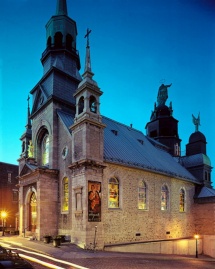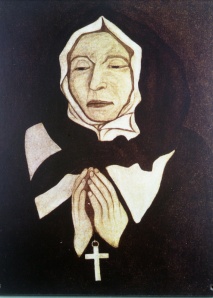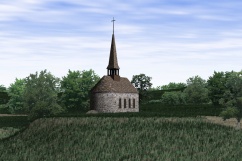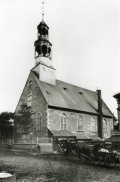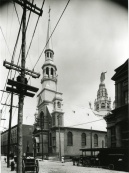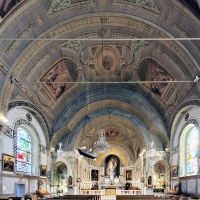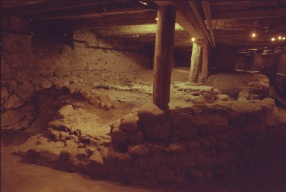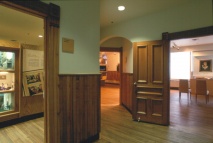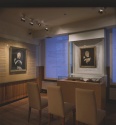Marguerite Bourgeoys Museum and Notre-Dame-de-Bon-Secours Chapel
par Martel, Stéphan
Marguerite Bourgeoys played a key role in education in Quebec, founding the Quebec chapter of the Congregation of Notre-Dame, a community of non-cloistered women dedicated to education that still is active around the world to this day. Sister Bourgeoys left another lasting mark on Quebec's tangible heritage: Notre-Dame-de-Bon-Secours, a pilgrimage chapel dating back to the mid-17th century. This shrine dedicated to the Virgin Mary is the oldest historic site in Montreal to have maintained its original function as a destination for pilgrims. The site's heritage is proudly displayed at the Notre-Dame-de-Bon-Secours Chapel/Marguerite Bourgeoys Museum complex founded in 1998.
Article disponible en français : Musée Marguerite-Bourgeoys et chapelle Notre-Dame-de-Bon-Secours
A Museum Celebrating Montreal's Religious Heritage
With its seven exhibit halls and chapel, the Marguerite Bourgeoys Museum, located in the heart of Old Montreal, covers more than 2,000 years of regional history. Its exhibits deal mainly with ancient Native culture, Marguerite Bourgeoys, the Congregation of Notre-Dame and the history of Notre-Dame-de-Bon-Secours chapel and the City of Montreal. An archaeological dig and observation tower round out the attractions found at the site, which is open to the general public. The museum complex, founded by the Sisters of the Congregation of Notre-Dame in 1998, is run by a corporation composed of members of the general councils of both the Congregation and the Conseil Provincial des Prêtres de Saint-Sulpice [Provincial Council of the Priests of St. Sulpice]. It is a key part of Montreal's heritage, especially given the age of the site and the wealth of objects and artefacts it houses. It is also avery popular historic interpretation centre. One must however note that a long history predates the museum's relatively recent creation.
Marguerite Bourgeoys, a Courageous Missionary to Canada
Marguerite Bourgeoys was born in April 1620 in Troyes, in the Champagne region of France. A childhood spent among craftspeople - her father was a candle-maker-imbued her early on with a sense of practicality and ambition that would define her throughout her entire life.
Bourgeoys first felt the call to devote her life to God during the procession of the rosary on October 7th,1640. She was accepted into the Congregation of Notre-Dame in Troyes, where she worked for nearly twelve years as a lay teacher for poor children.
After receiving an invitation from Mr. Paul Chomedey de Maisonneuve in 1652, Marguerite Bourgeoys left France for Ville-Marie (Montreal), which, at the time, was a busy hive of missionary activity. Bourgeoys arrived in the fledgling colony in November of 1653.
She founded the city's first school in 1658 and, in the following year, she founded the Congregation of Notre-Dame, one of the first non-cloistered Catholic orders for women, whose mission was and still is education.
A pillar of strength, tenacity, determination and generosity, Bourgeoys earned the respect of colonial authorities and devoted her life entirely to those in need. She was already considered a saint by the people of Montreal when she died at the age of 79 on January 12th, 1700, but it wasn't until much later, in 1982, that she was canonized by Pope John Paul II. Her remains were laid to rest at Notre-Dame-de-Bon-Secours chapel.
Montrealers can thank this energetic woman for their city's first school and pilgrimage chapel, as well as for a religious community that continues to work in the field of education.
Notre-Dame-de-Bon-Secours Chapel
The location for the small chapel dedicated to the veneration of the Virgin Mary was chosen by Bourgeoys and deMaisonneuve in 1655. It was to be built in a wooded area outside the city, on anatural promontory stretching from east to west along the St. Lawrence andseparated from the shore by a steep bank on its south face. (NOTE 1)
"The few people around are excited to see me picking up stones", Bourgeoys wrote during the early days of construction. "Mr. de Maisonneuve had some wood cut for the framing and even helped haul it out of the woods. I asked those for whom I did some work to give few days of their time for the chapel. We carried loads of sand, and the masons offered to work for us. Father Pijart has christened the chapel Notre-Dame-de-Bon-Secours."(NOTE 2)
The above passage is a testament to the solidarity of Montreal's first inhabitants and their interest in the growth of the colony, but it is also proof of how important it was for them to erect a shrine to the Virgin Mary, their divine intercessor.
Because of a number of obstacles, the project stalled for about fifteen years. (NOTE 3) It wasn't until August 24th, 1673 that Jean Dudouyt, representative of the Bishop Mgr. de Laval, finally gave permission for construction to resume. On the night of June 29th, 1675, Montrealers led a procession to the construction site and planted across. The first stone of the foundation was laid the following day by Gabriel Souart, a Sulpician. The chapel was completed in 1678 and annexed to the parish of Notre-Dame. Services were handled by the Sulpicians, while the Sisters of the Congregation of Notre-Dame maintained the chapel itself.
The chapel was completely destroyed by fire in 1754 and it was only in 1771 that the Sulpicians and church wardens were able to rebuild. The new building, which was completed in 1773, underwent a number of architectural and artistic changes throughout the 19th and 20th centuries. The biggest changes to the church's appearance took place between 1886 and 1893, under the direction of architects Perrault and Mesnard. A bell tower with double lanterns, flanked by twin bell turrets, replaced the church's old exterior facade. Inside, the vaulted ceiling was transformed into a barrel arch and François-Édouard Meloche was put to work painting eight scenes from the life of the Virgin Mary in trompe-l'oeil style on the ceiling. The same artist was hired again in 1892, this time as an architect to design the facade overlooking the port. Meloche's design was truly spectacular for its day: a towering steeple sat atop the apse, which was crowned by thirteen angel statues and the étoile de la mer [the star of the sea], a huge, 8-metre statue of the Virgin Mary.
Emergency renovations were carried out from 1953 to 1957 to repair the steeple and bell tower, whose structural weakness and advanced state of degradation were deemed dangerous.They were made lighter and reduced in height, giving the chapel its current appearance.
A Chapel in the Heart of Montreal's Oldest Neighbourhood
The history of Notre-Dame-de-Bon-Secours chapel is inextricably linked with the Montreal's growth during its first fifty years of existence. For inhabitants of Ville-Marie, who made regular pilgrimages to the chapel following its completion in 1678, the site was a safe asylum. (NOTE 4) In the late 17th and early 18thcenturies, the chapel's presence outside the city contributed to the foundation of the town of Bonsecours by encouraging farmers and craftspeople - carpenters, masons, joiners, cobblers, innkeepers, merchants, etc. - to settle in the area, making it a veritable artisan community. (NOTE 5) Some of the first families to settle in the area, among them the Vigerand the Papineau families, would go on to have a profound impact in Montreal's history.
As the population of Bonsecours grew, the chapel became its spiritual hub, gradually abandoning its original vocation as a place for pilgrims in favour of a role as a small parish church. Throughout the first half of the 20th century, Notre-Dame-de-Bon-Secours continued to welcome a growing number of parishioners from the town, which was in the midst of a population boom. It served both local French-speaking parishioners and an English-speaking Catholic community composed mainly of Irish and Scottish immigrants.
However, thanks to the efforts of Mgr. Ignace Bourget, the second bishop of Montreal, the chapel returned to its original vocation in 1848. With the help of the Sulpicians, the bishop successfully encouraged pilgrims to once again visit the small shrine dedicated to the Virgin Mary. The sheer number of ex votos dating back to this period (mostly votive hearts and miniature ships) are proof of the revival. At the same time, more and more dock workers and seamen began visiting the chapel, earning it the nickname of the "sailor's chapel."
In 1838, a small school was built under the sacristy in order to meet the needs of the area's English-speaking population. Two sisters from the Congregation of Notre-Dame were given the task of teaching the children of soldiers stationed in Quebec City. After the regiment left in 1846, the sisters opened three classrooms - two French and one English - to ensure that local children were given an education. In 1893, the Sulpicians had the school torn down and another built adjacent to the chapel. This new building housed the Bonsecours school until 1968 and is now home to the Marguerite Bourgeoys Museum.
The Marguerite Bourgeoys Museum
The creation of the museum is less the product of a concentrated effort than the result of an exceptional chain of events. In 1995, the Congregation of Notre-Dame wished to move the Marguerite Bourgeoys Centre (NOTE 6) to Old Montreal, closer to its founder's former home. The sisters in charge of the move had set their sight son the old classrooms of the Bonsecours school, a symbolic location, given its proximity to the chapel. The original project was to convert the former school into a simple interpretation centre dedicated to Marguerite Bourgeoys, but plans were changed by two key events.
First was the 1994 discovery of the ceiling mural painted by François-Édouard Meloche in 1886, which had been hidden by painted canvas that was pasted to the ceiling in the early 20th century. Three years later, the Priests of St. Sulpice and the Sisters of the Congregation of Notre-Dame, in collaboration with the Ministère de la Culture et des Communications du Québec, (NOTE 7) had the canvas removed and Meloche's work was restored to its original splendour.
The second event occurred in 1996. During the transformation of the former school, archaeologists on a preventive dig under the site's various buildings made an unexpected discovery, unearthing remnants of the old sacristy (built in 1784) and the warehouse known as La Friponne (built in 1759). (NOTE 8) Furthermore, traces of an Amerindian presence dating back to the first century A.D. were discovered under the chapel itself, (NOTE 9) along with the remains of a wooden palisade erected in 1709-1710. Finally, to the surprise of both the Sisters and the researchers themselves, the dig uncovered the foundations of the original chapel erected by Marguerite Bourgeoys, which were thought to be lost forever.
These remarkable discoveries prompted the Sisters of the Congregation of Notre-Dame and the project's architect, in conjunction with the Priests of St. Sulpice, to combine the chapel, school and archaeological dig into a single museum complex. The exhibition halls were designed to pay tribute to the history of the buildings by adopting a rigorous approach to restoration that proudly displayed all of the authentic pieces without submerging them in an artificial reconstruction. (NOTE 10)
Far from renouncing the original spiritual vocation of the Marguerite Bourgeoys Centre and the Notre-Dame-de-Bon-Secours chapel, the Marguerite Bourgeoys Museum has taken on a dual mission: it is a place of gathering, worship and pilgrimage, as envisioned by Marguerite Bourgeoys, (NOTE 11) but it is also a celebration of the tangible heritage associated with Montreal's religious, cultural and educational history. Of course, Marguerite Bourgeoys, the Congregation of Notre-Dame and the Priests of St. Sulpice, whose stories are inextricably linked with the history of the chapel, each occupy a cherished spot.
The Marguerite Bourgeoys Museum is thus home to a number of important objects belonging to the Congregation of Notre-Dame, its founder and the Priests of St. Sulpice, owners of the chapel. Some, such as a portrait of Marguerite Bourgeoys painted in New France, a 16th-century statuette given to Marguerite Bourgeoys by the baron of Fancamp in 1672 (NOTE 12) and a pietà sculpted in Avignon in the late 15th century, are veritable heritage treasures.
Many artists took part in the decoration and renovation of the chapel itself, including a number of big names in the history of Canadian art, such as Victor Bourgeau, Théophile Hamel, Édouard Meloche, Joseph Saint-Charles, Ozias Leduc, Delphis Beaulieu and Joseph Guardo. Finally, because of the quality and rarity of some of the artefacts uncovered, the site's archaeological dig is one of the most renowned in North America.
Notre-Dame-de-Bon-Secours chapel and the Marguerite Bourgeoys Museum have made key elements of Montreal's tangible heritage more accessible. The archaeological dig tells of an intermittent Native presence in the area in the first century and is a record of the rise of the Christian faith in North-eastern North America in the 17th century. The Marian chapel recalls the early days of the city of Montreal, as well as its development as an industrial and maritime hub. The shrine is the oldest place in the city to have preserved its original vocation as a destination for pilgrims. Over the years, it was frequented by members of a number of ethnic groups, starting with the French, followed by Irish and Scottish Catholics in the first half of the 19th century, and now once again by French-speaking locals. Notre-Dame-de-Bon-Secours has always played an important role in religion in Montreal; the goal of the Marguerite Bourgeoys Museum is to teach visitors about every facet of this role.
Stéphan Martel
Historian, Administrator, Centre de Documentation et archives
Chapelle Notre-Dame-de-Bon-Secours/Musée Marguerite-Bourgeoys
NOTES
Note 1: This information comes from hypsometrical and palynological studies conducted on-site by archaeologists. See: Groupe de recherches en histoire du Québec & SACL, La Chapelle Notre-Dame-du-Bon-Secours. Inventaire et fouille archéologiques au site BjFj-96, Vieux-Montréal et faubourgs, no. 22, 1996-1998, p. 13-16.
Note 2: Gauthier-Landreville, Marie-Anne (dir.), Les écrits de Mère Bourgeoys. Autobiographie et testament spirituel, Montreal, s.n., 1964, p. 56.
Note 3: Upon arriving in Ville-Marie as vicar general of New France in 1657, Sulpician Gabriel de Queylus put a stop to construction, undoubtedly because he felt it premature to erect a chapel when Ville-Marie did not even have a parish church. As a result of the conflict between de Queylus and François de Laval, future bishop of Quebec, construction was put on hold for several years.
Note 4: Morin, Marie, Les annales de l'Hôtel-Dieu de Montréal, 1659-1725. Histoire simple et véritable, Montreal, Les Presses de l'Université de Montréal, 1979, p. 73.
Note 5: Simpson, Patricia, and Louise Pothier, Notre-Dame-de-Bon-Secours. Une chapelle et son quartier, Montreal, Fides, 2001, p. 50.
Note 6: The Marguerite Bourgeoys Centre, founded officially in 1952, but dating back to the late 19th century, was run by the Congregation of Notre-Dame. The goal of the small Westmount Avenue interpretation centre was to teach visitors about the life and spiritual charisma of Marguerite Bourgeoys. The Marguerite Bourgeoys Centre also championed the cause of having Marguerite Bourgeoys recognised as a saint until her canonisation in 1982.
Note 7: Now known as the Ministère de la Culture, des Communications et de la Condition Féminine du Québec [Ministry of Culture, Communication and the Condition of Women]
Note 8: A warehouse commissioned in 1759 by Intendant François Bigot. It was used to store bread, meat and peas for soldiers in the colony, and was at the heart of a scandal in 1761 that led to a number of parties, including Intendant Bigot, being imprisoned in the Bastille and tried. See: Simpson, Patricia, and Louise Pothier, op. cit., p. 73-75.
Note 9: Archaeologists believe that the artefacts uncovered date back to the Middle Woodland period (400 B.C.-1000A.D.).
Note 10: Desnoyers, Maurice, Chapelle Notre-Dame-de-Bon-Secours/Musée Marguerite-Bourgeoys et le patrimoine architectural, Montreal, Marguerite Bourgeoys Museum, 1999, p. 23.
Note 11: SACL inc. and Marie-Thérèse Bournival, La force sacrée des lieux. Plan directeur de mise en valeur de la crypte et du site archéologique de la Chapelle Notre-Dame-de-Bon-Secours et du Musée Marguerite-Bourgeoys, Montreal, Marguerite Bourgeoys Museum/Notre-Dame-de-Bon-Secours Chapel, July 2006, p. 9.
Note 12: The statuette survived the 1754 fire, and is, along with the chapel's foundations, the last physical trace of the original Notre-Dame-de-Bon-Secours chapel.
BIBLIOGRAPHY
Desnoyers, Maurice, Chapelle Notre-Dame-de-Bon-Secours/Musée Marguerite-Bourgeoys et le patrimoine architectural, Montreal, Marguerite-Bourgeoys Museum, 1999, 90 p.
Gauthier-Landreville, Marie-Anne (ed.), Les écrits de Mère Bourgeoys. Autobiographie et testament spirituel, Montreal, s.n., 1964, 302 p.
Groupe de recherche en histoire du Québec et SACL, La Chapelle Notre-Dame-du-Bon-Secours. Inventaire et fouille archéologiques au site BjFj-96, 1996-1998. Vieux-Montréal et faubourgs, Montréal, Ville de Montréal-Ministère de la Culture et des Communications du Québec-Congrégationde Notre-Dame, no 22, 1998, 237 p.
Lauzon, Gilles et Madeleine Forget (dir.), L'histoire du Vieux-Montréal à travers son patrimoine, Sainte-Foy, Les Publications du Québec, 292 p.
Simpson, Patricia, Marguerite Bourgeoys. L'audace des commencements, Montreal, Fides, 2009, 117 p.
Simpson, Patricia, Marguerite Bourgeoys et la Congrégation de Notre-Dame, 1665-1700, Montreal-Kingston, McGill-Queen's University Press, 2007, 303 p.
Simpson, Patricia, Marguerite Bourgeoys et Montréal, 1640-1665, Montreal-Kingston, McGill-Queen's University Press, 1999, 269 p.
Simpson, Patricia, and Louise Pothier, Notre-Dame-de-Bon-Secours. Une chapelle et son quartier, Montreal, Fides, 2001, 150 p.
Additional DocumentsSome documents require an additional plugin to be consulted
Images
-
 Costume de religieuse
Costume de religieuse
de la Congrég... -
 Détail de la radiogra
Détail de la radiogra
phie du portrai... -
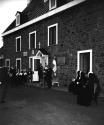 Dévoilement de la pl
Dévoilement de la pl
aque Marguerite... -
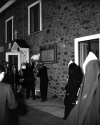 Dévoilement de la pl
Dévoilement de la pl
aque Marguerite...
-
 Document d'archive de
Document d'archive de
la Congrégatio... -
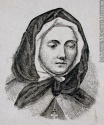 Marguerite Bourgeoys
Marguerite Bourgeoys
-
 Marguerite Bourgeoys
Marguerite Bourgeoys
- Fondatrice (1... -
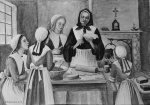 Marguerite Bourgeoys
Marguerite Bourgeoys
enseignant la c...
-
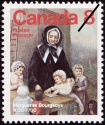 Marguerite Bourgeoys,
Marguerite Bourgeoys,
1620-1700 -
 Marguerite Bourgeoys,
Marguerite Bourgeoys,
fondatrice des... -
 Mère Marguerite Bourg
Mère Marguerite Bourg
eoys -
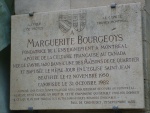 Plaque commémorative
Plaque commémorative
de Marguerite B...
-
 Portrait de Marguerit
Portrait de Marguerit
e Bourgeoys au ... -
 Portrait de Marguerit
Portrait de Marguerit
e Bourgeoys ava... -
 Portrait de Marguerit
Portrait de Marguerit
e Bourgeoys, 17... -
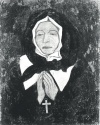 Portrait entièrement
Portrait entièrement
dégagé, avant s...
-
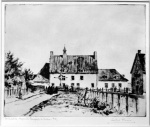 Première maison de la
Première maison de la
Congrégation d... -
 Radiographie du portr
Radiographie du portr
ait de Margueri... -
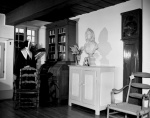 Religieuse de la cong
Religieuse de la cong
régation de Not... -
 Religieuses de la con
Religieuses de la con
grégation de No...

